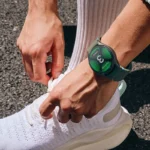Have you ever pulled up your iPhone’s map app only to find it can’t pinpoint your location? It’s frustrating when your iPhone’s location services stop working, especially when you’re trying to navigate somewhere new or use location-based apps. When location services fail on your iPhone, the issue often stems from disabled settings, software glitches, or privacy restrictions that can be fixed with a few simple troubleshooting steps.
Many users experience this problem after updating iOS or when using apps that need precise location data to function properly. Without working location services, you can’t use navigation features, check local weather, share your location with friends, order food delivery, or book rideshares. These everyday tasks depend on your iPhone knowing exactly where you are.
The good news is that most location services problems can be resolved without a trip to the Apple Store. From simply toggling location settings to checking for iOS updates, there are several effective solutions to get your iPhone’s location features working again.
Quick Fixes to Get iPhone Location Services Working Again
If your iPhone’s location suddenly seems off or apps like Maps, Weather, or Find My aren’t updating properly, you’re not alone. Location Services can glitch out due to everything from system bugs to misconfigured settings. Below are five battle-tested fixes you can try right now to get your location working like it should.
1. Make Sure Location Services Are Turned On
This sounds basic, but it’s the number one reason location features stop working. Whether you toggled something off accidentally or an iOS update altered your settings, it’s worth double-checking.
How to check:
- Go to Settings > Privacy & Security > Location Services.
- Ensure the toggle is turned on at the top.
- Scroll down and review individual app permissions — make sure the affected app has access to location services and is set to “While Using the App” or “Always” if necessary.
Also check System Services at the bottom of the same screen. Features like “Find My iPhone” or “Location-Based Alerts” need to be enabled for full functionality.
2. Restart Your iPhone
Sometimes, a quick reboot is all it takes to reset background processes and get location features working again. Think of it as a clean slate.
How to restart:
- For Face ID models: Press and hold the Side Button + Volume Up (or Down) until the power slider appears.
- For Home Button models: Press and hold the Side or Top Button until the slider appears.
- Slide to power off, wait a few seconds, then power it back on.
3. Reset Location & Privacy Settings
If a certain app or feature still won’t use your location properly, it could be due to corrupted or conflicting permissions. Resetting your location and privacy settings can clear out any issues without erasing your personal data or content.
How to reset:
- Go to Settings > General > Transfer or Reset iPhone > Reset.
- Select Reset Location & Privacy.
- You’ll be prompted to enter your passcode — then the reset will happen instantly.
After the reset, location permissions will return to their default state. The next time apps need access, they’ll ask you again.
4. Fix Your Date & Time Settings
iOS uses date and time data for all kinds of background services — including those tied to your location. If your time zone is incorrect or the clock is off by even a few minutes, it can confuse apps that rely on real-time location tracking.
Here’s how to get back on track:
- Go to Settings > General > Date & Time.
- Make sure Set Automatically is turned on.
If your iPhone still shows the wrong time zone after doing this, turn off airplane mode or reconnect to Wi-Fi so it can sync with Apple’s time servers.
5. Update to the Latest iOS Version
Bugs affecting GPS and Location Services crop up occasionally — especially after major iOS updates. Apple often pushes quiet fixes behind the scenes in minor updates, so even if your phone seems current, there may be a patch waiting.
To check for updates:
- Go to Settings > General > Software Update.
- If there’s an update available, tap Download and Install.
Even if it’s just a point release like 17.4.1, it could contain essential fixes to system services and background processes tied to your location data.
Bonus Tip: Check for Signal Interference or VPN Use
If you’re using a VPN or spoofing app, try disabling it temporarily. VPNs can interfere with how your phone determines and reports your real-world location — especially for apps that use Wi-Fi triangulation. Also, thick walls, underground areas, or remote rural zones can interfere with GPS reception. If you’re indoors, step outside to test location accuracy again.
Still Not Working?
If none of the above steps restore your iPhone’s Location Services, it might be time to contact Apple Support. Hardware issues like a faulty GPS antenna or problems caused by a recent drop or water exposure may require in-store diagnostics or repair.
Key Takeaways
- Restarting location services and your iPhone often fixes most location-related issues.
- Check app permissions to ensure specific apps have the necessary location access.
- Update your iOS to the latest version to resolve system bugs affecting location accuracy.
Troubleshooting iPhone Location Services
When iPhone location services stop working, several common issues can be fixed through careful troubleshooting. These problems often stem from incorrect settings, outdated software, or connectivity issues that prevent apps from determining your location accurately.
Assess Location Services Settings
First, check if Location Services is turned on. Go to Settings > Privacy & Security > Location Services and toggle it on. If already on, try turning it off and on again to reset the function.
Many apps need individual permission to access your location. Review app permissions by scrolling down in the Location Services menu. Look for apps showing “Never” or “Ask Next Time” that should have location access.
Common settings to adjust:
- Enable Precise Location for apps that need exact positioning
- Check Share My Location settings if sharing location with friends isn’t working
- Verify Privacy Restrictions aren’t blocking location access
If specific apps still can’t access your location, try resetting location and privacy settings without deleting personal data.
Examine iOS and Software Update Status
Outdated iOS versions often cause location service problems. Check for pending updates by going to Settings > General > Software Update.
iPhone location features depend on accurate time settings. Make sure automatic date and time is enabled in Settings > General > Date & Time. Incorrect time settings can prevent proper GPS synchronization.
Some location issues appeared after the iOS 18 update, requiring specific fixes. If problems began after updating, try restarting your device by pressing and holding the side and volume buttons until the power off slider appears.
For persistent issues, check if your iOS needs more comprehensive maintenance. Background system processes can sometimes interfere with location functionality.
Check Connectivity and System Services
Location accuracy depends on multiple technologies working together. Make sure Wi-Fi is enabled (even if not connected) to help with location positioning. Airplane Mode can disrupt location services, so verify it’s off.
Battery-saving features often affect location:
- Turn off Low Power Mode (Settings > Battery)
- Disable Low Data Mode if enabled
- Enable Background App Refresh for location-dependent apps
Check System Services at the bottom of the Location Services menu. Important location-related services like “Setting Time Zone” and “Find My iPhone” should be enabled.
If problems persist after trying these steps, more drastic measures may be needed. Some users report success after backing up and restoring their iPhone or contacting Apple Support for hardware-related issues that software fixes can’t resolve.
Optimizing Location Services for Apps and Navigation
Getting the most from your iPhone’s location features requires proper setup and troubleshooting. When location services aren’t working correctly, you can fix most issues with some simple adjustments to settings and apps.
Configure App-Specific Settings
To ensure apps have proper location access, check individual app settings. Go to Settings > Privacy & Security > Location Services and verify each app has the appropriate permission level. You can choose from:
- Never – App cannot use your location
- Ask Next Time Or When I Share – App must request permission each time
- While Using the App – Location access only when app is open
- Always – App can use location even in background
Some apps like Maps or navigation tools need “Always” permission to work properly. For privacy, limit other apps to “While Using” when possible.
Make sure Background App Refresh is enabled for critical location apps. This allows them to update location data even when not actively used. Find this setting under Settings > General > Background App Refresh.
Refine Location-Based Features
Precise Location significantly improves location accuracy. When disabled, apps receive only an approximate area rather than your exact position. To enable it:
- Go to Settings > Privacy & Security > Location Services
- Select the app you want to adjust
- Toggle on Precise Location
Location-based alerts and suggestions may not work without this feature enabled. Apps like Find My and Google Maps particularly benefit from precise location for accurate tracking.
Consider enabling Significant Locations for improved predictions. This feature learns places you visit often to provide better location-based suggestions. Find it under Settings > Privacy & Security > Location Services > System Services.
For better GPS accuracy, calibrate your compass by moving your iPhone in a figure-8 pattern when prompted in the Maps app.
Resolve GPS and Network Issues
Poor GPS performance often stems from network or system problems. Try these fixes:
- Toggle Airplane Mode on and off to reset all connections
- Restart your iPhone to clear temporary system glitches
- Check your internet connection – GPS works better with Wi-Fi or cellular data
- Update iOS to the latest version for GPS improvements
If specific apps like Google Maps have location issues, try deleting and reinstalling them. This can fix corrupted app data that affects location detection.
Physical obstructions can block GPS signals. Move away from tall buildings, dense trees, or underground locations for better reception. Remove any thick cases or covers that might interfere with signal reception.
For persistent issues, try resetting location and privacy settings (Settings > General > Transfer or Reset iPhone > Reset > Reset Location & Privacy). This returns all location permissions to default.







